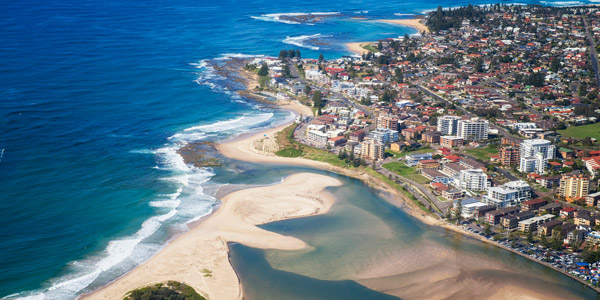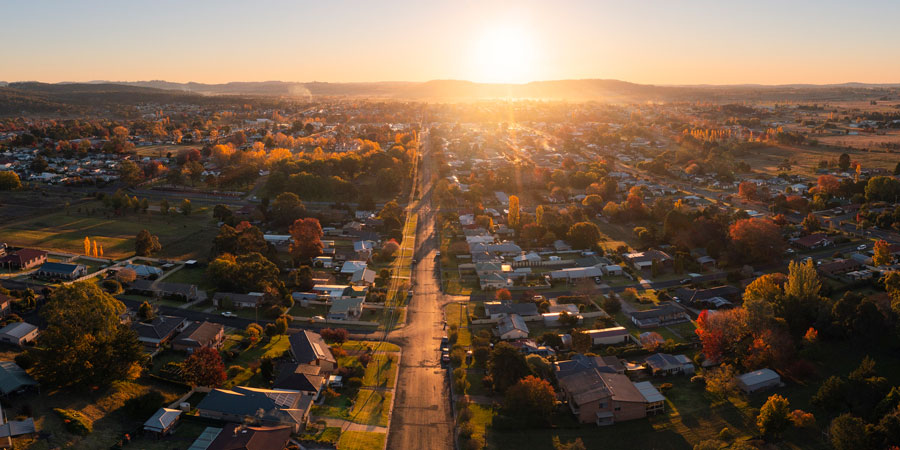11 July 2022
The NSW Government has released the NSW Climate Change Adaptation Strategy. The Strategy sets out an ambitious approach to climate change adaptation and provides a framework that will strengthen and expand action to adapt to climate change now and over the long term. It builds on climate change strategies already in place, such as the state’s Net Zero Plan Stage 1: 2020-2030, and a comprehensive suite of programs that are embedding resilience and adaptation across the state.
NSW is already experiencing the impacts of climate change. Most recently these have included the unprecedented cycle of heatwaves, droughts, bushfires, storms and floods. By adapting now, NSW will maximise opportunities, minimise harm and help secure the state's ongoing prosperity and wellbeing.
The strategy sets out key decision-making principles and objectives for adaptation, which inform the following four key priorities supported by a suite of actions.

Develop robust and trusted metrics and information on climate change risk
The Government will invest in climate change research and data to inform strategy delivery and for use by all NSW stakeholders. This will include ongoing research into climate change risks, opportunities and adaptation options to inform government decisions. It will also include research and modelling to translate climate change scenarios into real-world socio-economic impacts and address priority knowledge gaps across sectors. For example, impacts to health and vulnerable communities. The NSW Government will also continue to provide publicly accessible local level climate change projections and engage in climate change scenario analysis for the state to inform decision-making.
This information will be made publicly available through AdaptNSW and other channels to support all NSW stakeholders to manage their own risks and opportunities where they can.
A set of metrics will be developed to measure progress toward climate change resilience and adaptation for all of NSW by the end of 2023. This information will help the Government make investment decisions and ensure resources are spent wisely. The metrics will span all facets of society to cover the objectives of the strategy. Progress under the strategy will be monitored, reported and evaluated to ensure accountability and continuous improvement. This will include publishing whole of government climate change disclosures consistent with the Taskforce on Climate-related Financial Disclosures recommendations and other leading international and national standards and guidance.

Complete climate change risk and opportunity assessments
The strategy commits to release a state-wide climate change risk and opportunity assessment at least every five years, with the first one due to be released in 2023. The assessment will cover the whole of NSW and analyse risks and opportunities to the NSW economy, society, environment and ecosystems from the current and future effects of climate change. The assessment will provide place- based information where possible and analyse the distribution of risks with particular emphasis on disadvantaged, vulnerable or sensitive groups and ecosystems. A full list of criteria for the risk assessment is available in the Strategy.
Develop and deliver adaptation actions plans
Using the information from the climate change risk and opportunity assessments, the NSW Government will publish climate change adaptation action plans at least every five years. The first one is due to be released in 2023. The plans will focus Government resources on the most important issues identified in the risk and opportunity assessments. Adaptation action plans will be integrated whole-of-society, multi-sector policy documents that set out concrete adaptation actions for all areas and levels of government, the economy, society and the environment. They will set out roles and responsibilities, concrete goals, allocate resources and provide a detailed roadmap to put adaptation into practice. Priority actions will be set for the next 5 years with the plans also considering how actions contribute towards medium and longer-term objectives.

Embed climate change adaptation in NSW Government decision-making
This priority focuses on mainstreaming adaptation into everyday decision-making and planning across the NSW Government. This will be achieved through updating policy, defining roles and responsibilities for adaptation within Government and enhancing and embedding climate change risk management into existing frameworks. The NSW Government also commits to advocating for climate change adaptation in international decision-making in the strategy.
Related news

High school students from across Western Sydney and the Central Coast gathered at Powerhouse Castle Hill for the Future Leaders Forum to explore climate leadership. Presented in collaboration with the NSW Department of Climate Change, Energy, the Environment and Water, the forum brought together students to connect and voice new perspectives on climate change and its impacts.

The NSW Government hosts three events for Climate Action Week Sydney in March 2025

Climate change is driving more frequent and intense heatwaves in NSW, posing risks to health, infrastructure, and the environment. The Greater Sydney Heat Smart City Plan aims to enhance heat resilience through collaborative efforts and adaptive strategies, ensuring a safer, cooler future for Sydney.
